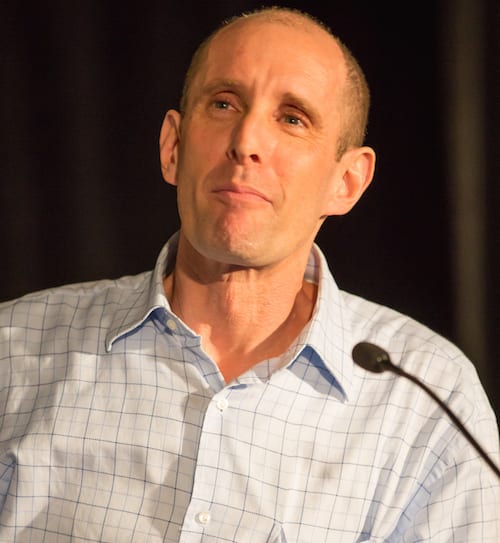
What the election of Donald Trump tells us about leadership
OPINION – Tomorrow, January 20, Donald J. Trump will be sworn in as 45th President of the United States. What can his campaign and dumbfounding victory teach us about leadership?
Words: Dan Markovitz, consultant, speaker and author
Photo credit: Evan El-Amin / Shutterstock, Inc.
No, the title of this piece is not an error. Nor is it sarcastic. The truth is that Donald Trump’s unlikely run to the White House – and subsequent victory – provides an important leadership lesson for anyone in a position of authority.
The profound sense of alienation and disempowerment of the lower middle class was the big story of this election. The passionate crowds that cheered Trump’s message – and Bernie Sanders’s – were evidence that people on the lower rungs of the economic ladder felt their leaders weren’t listening and didn’t care about them. Their vote for Trump was an existential howl of economic despair. The masses that supported him weren’t just speaking truth to power. They were shoving a giant shaving cream pie in the face of the elites.
Now, it’s true that Trump himself is not just one of the elite; he was born into it. The product of an expensive private boarding school and Wharton business school, he inherited his father’s real estate business and received a million dollar loan to start his own real estate ventures. Never mind that he lives in an opulent apartment on Fifth Avenue in New York, flies in a private plane, owns multiple houses, etc. – he nevertheless managed to portray himself as a “blue-collar billionaire” able to connect with the struggles of ordinary front-line workers.
Compared to Hilary Clinton, Trump sounded not just like an outsider, but like a regular working-class guy. Clinton spoke in eloquent but anodyne phrases that seemed as though they had been specifically focus group-tested to ensure that they wouldn’t be memorable. She rattled off grammatically correct lists of policy proposals so carefully constructed that you could practically hear the paragraph marks and semi-colons. By contrast, Trump’s speeches were rambling screeds full of childish asides and churlish comments. He didn’t speak so much as he vented. In so doing, many people felt that he was giving them a voice they hadn’t had in the halls of government. Perhaps more importantly, he did this in places where Clinton didn’t go (or didn’t go often enough): the critical “blue wall” states of the upper Midwest. The connection that he forged with his supporters through his language and his choice of campaign rally locations is, I think, the big lesson for business leaders. He made people feel as though their anxiety and stress were finally being heard.
MINIMIZING THE HIERARCHICAL DISTANCE
Businesses don’t have elections in the same way a democratic country does, but you can be sure that if they did, plenty of workers would give the middle finger to their CEOs just as voters did in this election. How many employees at Disney, Southern California Edison, Fossil, and Northeast Utilities would vote for the status quo after they were forced to train their outsourced replacements? How many employees would vote for a Trump-like figure at the old General Motors, where executives kept themselves in almost total isolation from the front-line workers? Prior to the 2009 bankruptcy, they ate catered meals in a private dining room; used a special elevator that took them directly from the garage to their offices on the 14th floor; and allowed people entrance to that floor by invitation only.
It’s this distance between the CEO bubble and the daily life of ordinary workers that leads to the popularity of television shows like Undercover Boss. The premise – force a CEO to do the menial work of the lowest-paid, front-line workers and film it – is a magnificent exercise in schadenfreude (the pleasure derived from someone else’s misfortune). Viewers revel in the CEO’s struggles with the job, and gloat at his or her epiphany that the work is both really hard and poorly paid. It feeds off the perception that there’s a fundamental inequality in the workplace (and society at large), and that compensation isn’t appropriately calibrated to the work that ordinary people do. It’s the same feeling that to some extent powered Donald Trump’s campaign.
In his book, Plain Talk, Ken Iverson, the late CEO of Nucor wrote:
“Inequality runs rampant in most business corporations. I am referring now to hierarchical inequality which legitimizes and institutionalizes the principle of ‘We’ vs. ‘They….’ The people at the top of the corporate hierarchy grant themselves privilege after privilege, flaunt those privileges before the men and women who do the real work, then wonder why employees are unmoved by management’s invocations to cut costs and boost profitability…. When I think of the millions of dollars spent by people at the top of the management hierarchy on efforts to motivate people who are continually put down by that hierarchy, I can only shake my head in wonder.”
To fight this inequality – to minimize the distance between leadership and the rank and file – Iverson installed pay-for-performance bonuses for front-line workers, not just executives. He insisted that in bad times, top management takes a pay cut before anyone else. Executives flew economy class on business trips and rented regular cars. Everyone in the organization even had the same insurance plans.
GO AND SEE
Of course, great leadership requires more than just foregoing the perks and benefits of the C-suite. That’s why genchi genbutsu, or “go and see,” is so important. When leaders go and see on a regular basis, they close the distance between their offices and the shop floor, and they build a foundation of trust and understanding that leads to superior performance.
Art Byrne, former CEO of Wiremold, showed us how essential it is for executives to participate in the daily work processes of the front lines. In 10 years under his leadership, Wiremold quadrupled sales, raised gross profit from 38% to 51%, and increased the value of the company by nearly 2500%. But he didn’t do it through empty slogans issued from the executive suite or motivational posters tacked to the walls. He did it by “going and seeing,” by joining with his workers on the front lines. In his book Lean Turnaround, Byrne says: “You can’t just send a memo. You’ve got to lead it. Show them by example, do it on the shop floor.”
John Toussaint, the former CEO of community-owned health system Thedacare said much the same thing. Despite eye-popping increases in the cost of medical care, Toussaint dramatically improved hospital performance during his eight-year tenure, doubling revenue and operating margin, all while receiving numerous awards for quality of patient care. When asked during an interview why other hospitals struggle to follow Thedacare’s lead, John replied:
“The biggest mistake that is made is that the senior leaders or the CEO delegates this work to somebody from a department or a [six sigma] black belt and says, ‘Here, you just go do lean. And then come back and report to me.’ This is about everyone’s engagement, from the CEO to the front line nurse and everyone in between.”
That doesn’t mean that the CEO has to clean and oil the drill press, or empty bedpans in the ICU everyday (although once in a while, it wouldn’t be a bad idea). Simply being present and sharing some of the experiences of regular workers can be enough. A friend of mine who worked at the Naval Reactors office in the late 1990s told me about the leader of the agency, a four-star Admiral who had his own private driver as well as a host of yeoman and support staff. During their annual Physical Readiness Test, my friend was actually passed by the Admiral heading in the opposite direction, who yelled words of encouragement at him as he went by. Twenty years later, my friend still remembers that inspirational moment.
SHOWING THAT YOU CARE
It’s tough for politicians running for office to practice genchi gembutsu. Visits to factories and car dealerships are little more than photo ops. Sharing pancakes at a diner with locals is a clumsily staged event with stilted conversation in a congested fishbowl of photographers and reporters. But even with those drawbacks, those activities are crucial in showing voters that the politician sees and understands their situations.
All employees understand that CEOs have their own responsibilities and heavy demands on their time. But letting go of (some of) the isolating trappings of power and going to see is far simpler for executives than for politicians: they’re not surrounded by a phalanx of secret service, and they don’t have to travel to five campaign stops in a single day on a private plane. Gaining first-hand experience with the jobs that employees do provides them with a deep understanding of the challenges that their people face. More importantly, it shows the employees that their leaders care and listen. It creates the same kind of bond with workers that Trump forged with voters. And that’s the lesson to take from the 2016 election.
THE AUTHOR

Dan Markovitz is a consultant and the author of Building the Fit Organization: Six Core Principles for Making Your Company Stronger, Faster, and More Competitive. A faculty member at the Lean Enterprise Institute and a lecturer at the Fisher College of Business, he holds a Stanford MBA, and received a Shingo Research Award for his first book, A Factory of One.
Read more


FEATURE – The difficulty of sustaining results often stems from our inability to monitor the KPIs that truly matter and to focus on business priorities. The author suggests a hands-on approach to strategy deployment.


WOMACK’S YOKOTEN - When managed poorly and tied to the wrong performance metrics, financial rewards can seriously damage your organization, Jim Womack warns in his latest column.


INTERVIEW – At the recent UK Lean Summit, we met the Head of Student Services of an English high school. We asked her about the interesting work the school is doing to improve the delivery of education to students with special needs using lean thinking.


FEATURE – How do kamishibai boards work and what sort of benefits can they bring to a lean transformation? The author discusses what he saw on a recent gemba walk.

